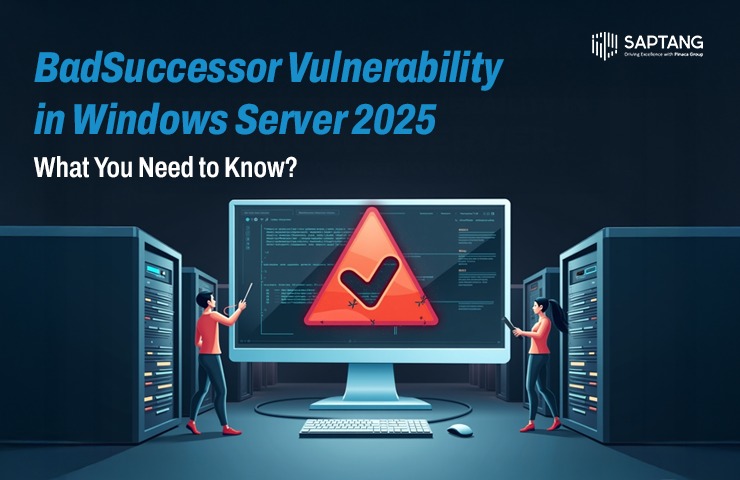
A serious security flaw called the BadSuccessor vulnerability has been found in Windows Server 2025. It could let attackers break into any account in Active Directory, including admin accounts, without needing special access or complex tricks. If your systems are using or testing this new version, you could already be at risk.
BadSuccessor is a recently discovered vulnerability affecting Windows Server 2025, specifically how it handles Kerberos authentication within Active Directory environments. Security researchers found that attackers can use this flaw to impersonate any user — including domain administrators — with little resistance.
The bug stems from a flaw in how Windows Server 2025 deals with cryptographic keys used in the Kerberos protocol. When a new key is generated for a user, the system doesn’t properly verify if it was changed securely. This gives attackers a way to inject a “bad” key that the system wrongly accepts — hence the name BadSuccessor.
Active Directory is the backbone of identity and access management for most organizations. If attackers gain access to AD accounts — especially privileged ones — they can:
The fact that this vulnerability impacts Windows Server 2025, a version not yet widely adopted, is also telling. It shows that attackers are not waiting for full rollouts — they’re already testing new platforms for weak spots.
The vulnerability was revealed by security researcher Andrew Bartlett and verified by the team at Samba.org. Their responsible disclosure helped Microsoft take notice and begin preparing a fix.
Although technical details were shared on GitHub to help researchers understand the flaw, there’s growing concern that attackers may try to exploit this information before patches are widely implemented.
As of now, Microsoft has acknowledged the issue and is working on a patch. However, no formal security advisory or update has been released at the time of writing.
This means system administrators and security teams need to stay alert, especially if they are part of beta testing or early adoption programs for Windows Server 2025.
Even if your organization hasn’t deployed Windows Server 2025 yet, this vulnerability is a wake-up call. Here’s what you can do:
You might think this only concerns tech teams or early adopters — but it’s bigger than that. Attacks on identity infrastructure are becoming more frequent because breaking identity means breaking into everything.
Whether you’re a large enterprise or a small organization, understanding how quickly attackers move — and how critical proactive security has become — is vital. The BadSuccessor vulnerability is just one example of how emerging systems can become entry points if overlooked.
You may also find the helpful: Over 100 Malicious Chrome Extensions Exposed: What You Need to Know